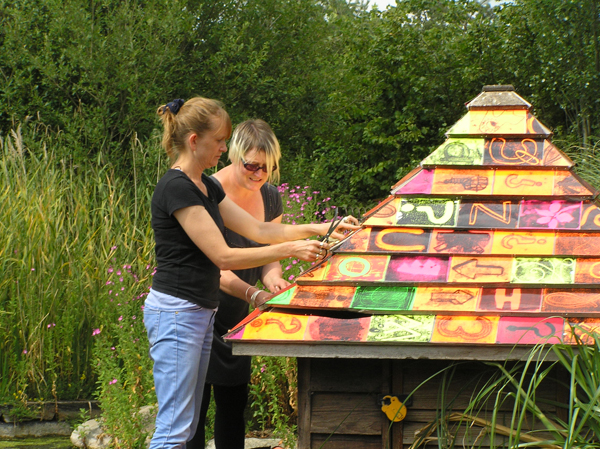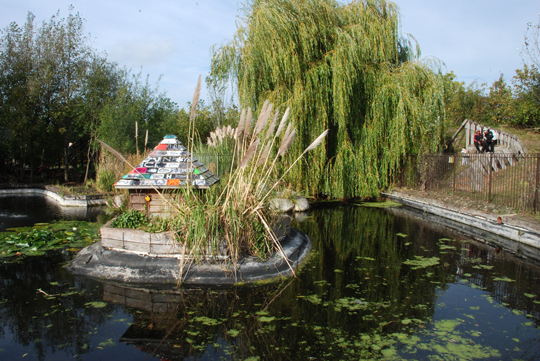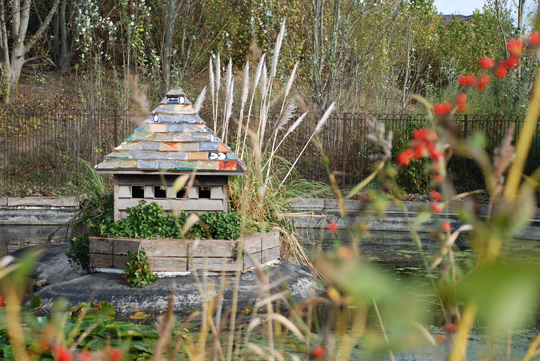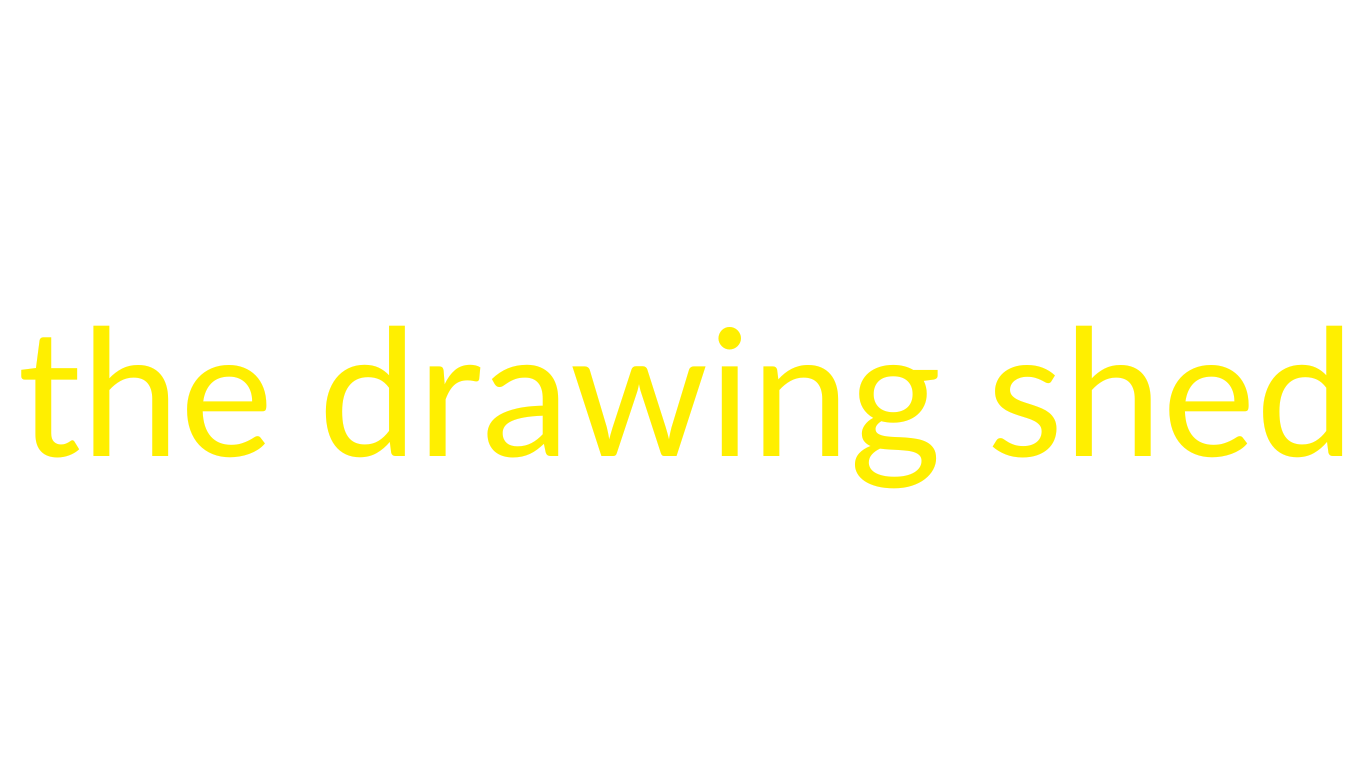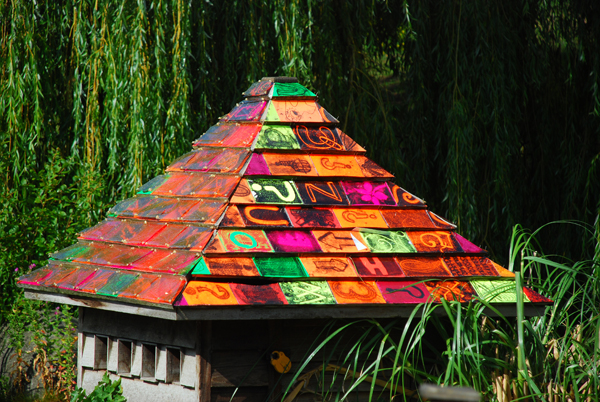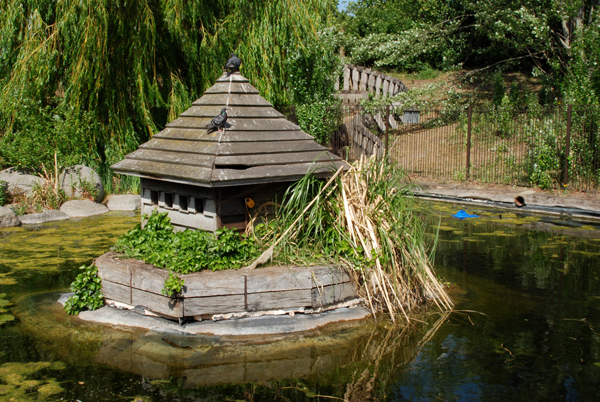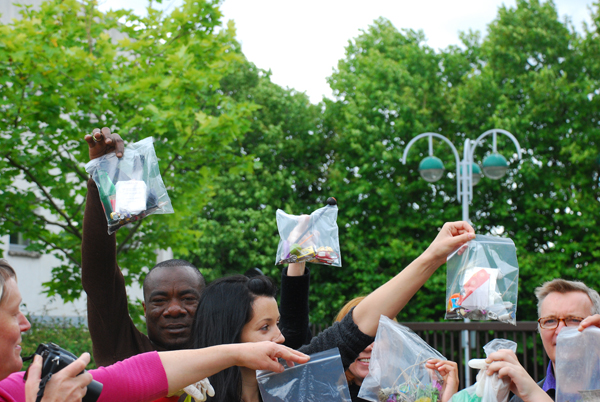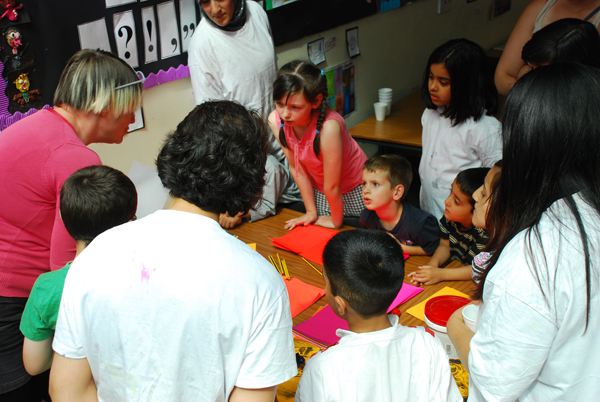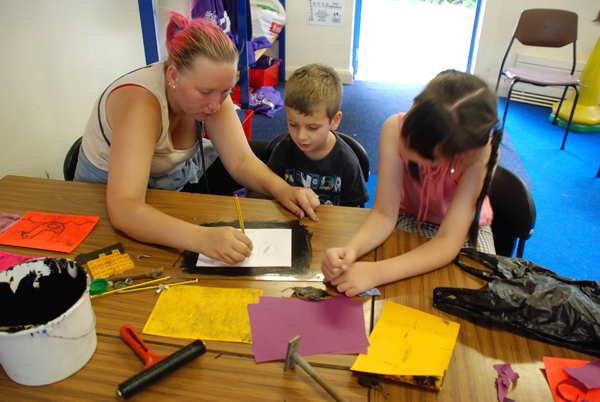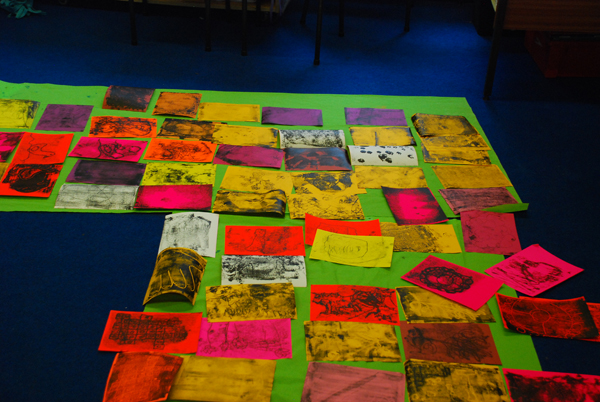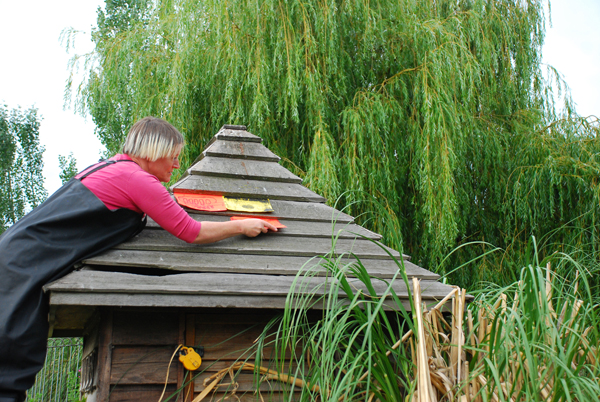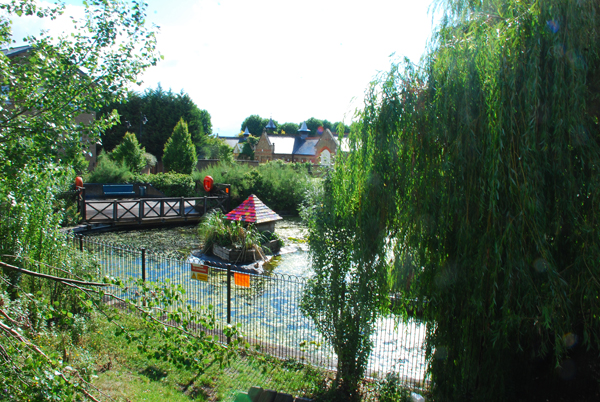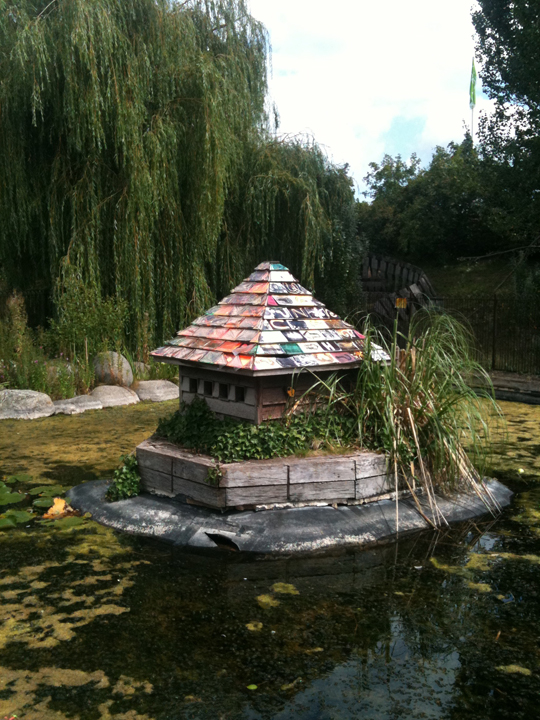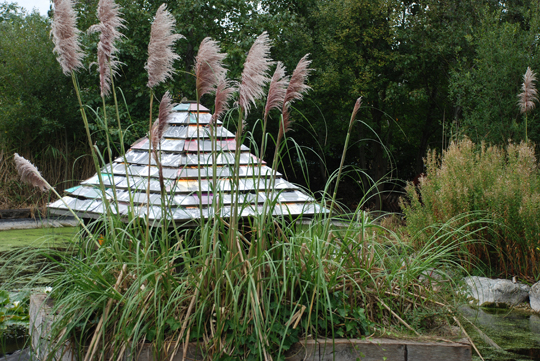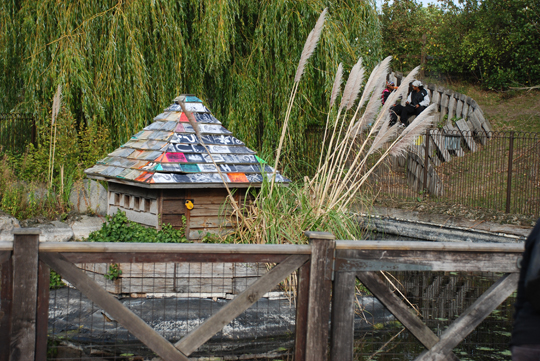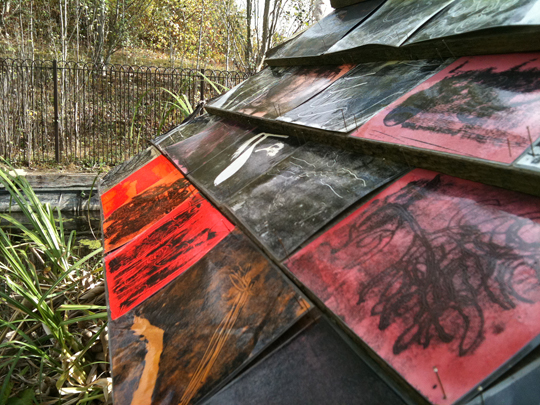The Work: Duck House July – September 2011
Lloyd+Labern ‘re roofed’ the Langthorne Park’s Duck House in mono-printed tiles to create a temporary work for the London Borough of Waltham Forest as a part of the Fellowship Festival.
The artists created prints based upon the concealed underbelly of the park to create one side only of the roof – each image was veiled by a suspended and ‘hand drawn off ‘ gold-filmed cellophane tile sitting over each difficult image, which could only be clearly seen by the viewer when it rained and the transparency of the cellophane revealed its story.
Images for the other three sides of the roof were created working with families from local schools and a sheltered housing scheme for the elderly. Together adults and children collected found and discarded objects of little value in local parks. Participants initially distrusted that this process of collecting rubbish could yield a rich creative resource but were full of surprise at the beauty of some of the objects and the simple pleasure of finding. This process was supported by the artists as they went on to make mono-printed tiles for the roof on fluorescent and coloured paper.
Symbols and letters unique to particular world alphabets (pulled in from a City of London Festival workshop), allude to the multicultural nature of the communities and form the front face of the work.
Context
This is the duck house as the artists first saw it, sitting in the middle of the pond in a park in Leytonstone, June 2011. Recalls of the MP’s Duck Island scandal immediately came to mind.
Langthorne Park, now holds a worn veneer of its carefully landscaped park, with small pockets of tired beauty which are overseen by the energies of Audrey the Park Keeper and the Friends of the Park.
It sits in the south of Waltham Forest, high levels of deprivation echoed recently by gang and other antisocial behaviour. On asking, users of the park do not feel safe to cross the park at certain times of the day and the respected ‘authority’ of Audrey the Park Keeper is vital to safety and continued community activity in this ‘public’ space.
Concealed here in the Desire Lines that cross the park, youths hold court the outside gym as a fresh air ‘front room’, men drink in small groups, families use the play area, eastern european mums cluster with prams, teen lovers steal a space in hidden places, older people worry constantly about the ducklings dying inexplicably every day.
There is a fragility in this place; it has considerable community use/value alongside a pervading sense of rootlessness, an underbelly; It is in this contested space that the artists chose to work with the Duck House – to re roof and re frame it, to recognise and contain all the contradictions of this place.

Two sides of the roof holding images made by children, their parents and older people of objects found in the parks, the brighter images grouped together in contrast to the more sombre images on the right hand face.
